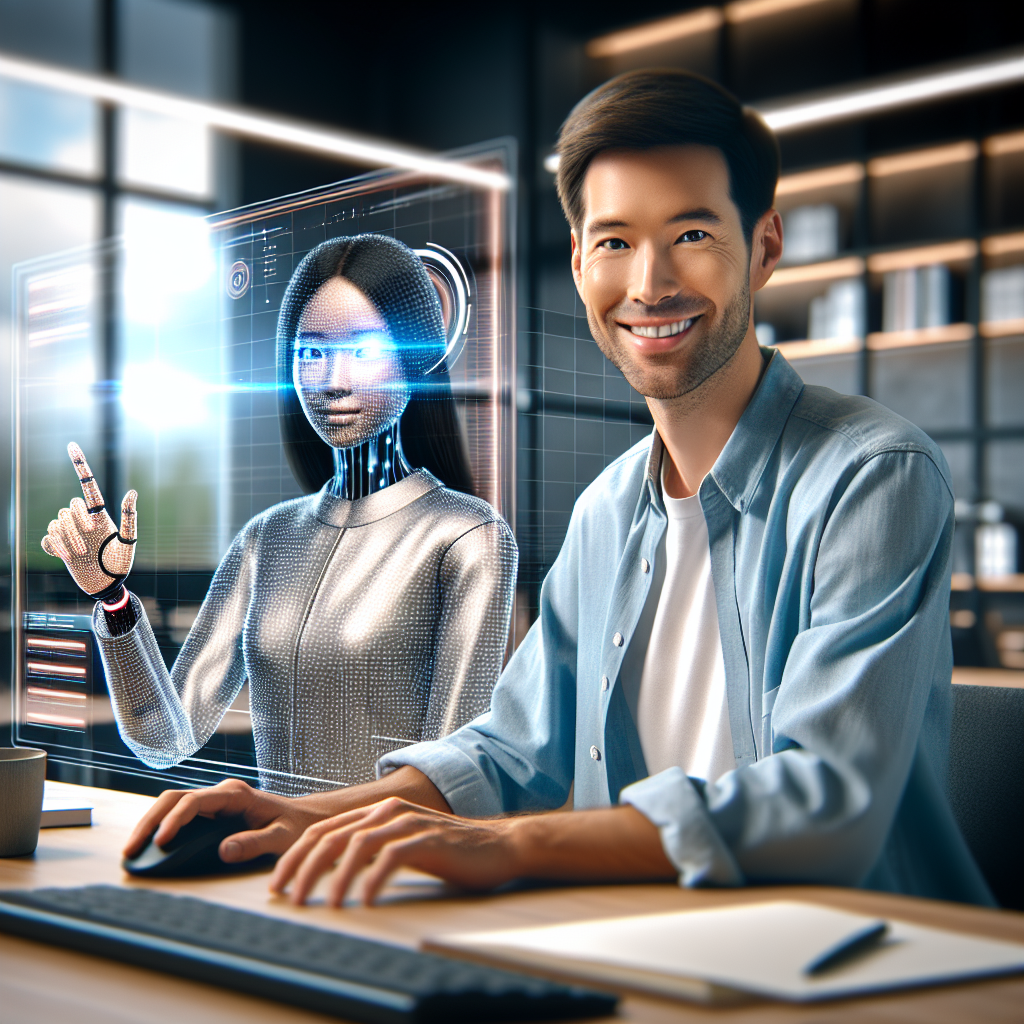Ladies, gentlemen, and robots pretending to be humans – welcome to the dawning of a new era! The robot revolution isn’t coming anymore; it’s parking in your garage, making your coffee, and probably writing your kid’s homework. Autonomous systems are no longer confined to sci-fi movies or that one weird neighbor’s basement experiments. They’re here, they’re sophisticated, and they’re about to transform your industry faster than you can say “Please don’t take my job, Mr. Robot.”
But before you start hoarding canned goods and teaching yourself how to live off the grid, let’s take a breath. This robot revolution might actually be the best thing since sliced bread (which, by the way, robots can now slice with laser precision while composing a sonnet).
Meet Your New Co-workers: Autonomous Systems 101
The future isn’t just knocking on our door – it’s letting itself in and rearranging the furniture. Let’s get acquainted with our new digital colleagues.
So what exactly are these autonomous systems everyone’s buzzing about? Think of them as the overachieving colleagues who never complain about Monday mornings. Autonomous systems are essentially technologies that can perform tasks, make decisions, and adapt to new information without a human frantically pushing buttons behind the scenes.
It’s like having an assistant who never needs bathroom breaks, doesn’t steal your lunch from the office fridge, and doesn’t bore you with endless stories about their weekend. They just… work. All the time. Without complaining. (I’m not jealous, you’re jealous.)
These AI digital workers run on sophisticated algorithms that can learn from experience – imagine if your new hire could instantly download all the knowledge from your most experienced employee without the awkward onboarding process or the “I’ve been here for 20 years, so I know best” attitude.
The Great Industry Makeover: No Industry Left Behind
The impact of autonomous systems across industries is about as subtle as a peacock at a penguin convention. Let’s take a peek at how this technology is transforming various sectors:
In transportation, self-driving vehicles are turning commutes into productive time. Instead of white-knuckling your steering wheel while mentally composing your resignation letter in traffic, you could be catching up on emails or, let’s be honest, watching cat videos. Tesla owners are already experiencing this future, though sometimes their cars decide that a stop sign is actually a billboard for pizza, which keeps things exciting.
In warehousing, autonomous robots zip around fulfillment centers like caffeinated toddlers, picking and packing orders with frightening efficiency. Amazon’s little orange robots don’t need lunch breaks, don’t get distracted by office gossip, and never call in sick because they partied too hard on the weekend.
Even aviation is getting the autonomous treatment. Drones are delivering packages, inspecting infrastructure, and making impressive aerial videos of your neighbor’s embarrassing backyard yoga sessions. Commercial flights still have pilots, but let’s be honest – they’re mostly there to make reassuring announcements and look good in those uniforms while the autopilot does the heavy lifting.
No-Code, No Problem: AI for the Coding-Challenged
The coding revolution is here, and it doesn’t require a computer science degree or a love for caffeine-fueled all-nighters.
Remember when creating software required years of education, thousands of hours of practice, and the patience of a saint? Those days are quickly becoming as outdated as flip phones and dial-up internet, thanks to user-friendly low-code platforms that are democratizing AI application development.
These AI SaaS creation platforms are turning what was once coding wizardry into something more akin to assembling furniture from IKEA – still mildly frustrating at times, but doable with a basic set of instructions and maybe a YouTube tutorial. Platforms like Zygote.AI are leading this revolution, allowing even those who think “Python” is just a large snake to create sophisticated AI applications.
“I used to break out in hives whenever someone mentioned coding,” says Jamie, a small business owner who recently built her own customer service AI. “Now I’m creating AI workflows while watching Netflix. My programmer friends are either impressed or planning my demise – I can’t tell which.”
The beauty of these low-code platforms is that they abstract away the complexity without sacrificing functionality. It’s like being able to drive a car without understanding the combustion engine – you don’t need to know how the magic happens to enjoy the ride and get where you’re going.
Your AI, Your Way: Customization is King
Remember when “customization” meant choosing between beige or slightly-less-beige for your office equipment? The new wave of AI digital workers makes that look like the Stone Age of personalization.
Today’s customizable AI digital workers can be tailored to fit your business like a bespoke suit – if that suit could also predict market trends, automate your inbox, and occasionally recommend a surprisingly good lunch spot. With platforms like Zygote.AI, businesses can create AI assistants that understand their unique processes, speak their industry jargon, and embody their brand voice.
“We programmed our AI to have the same slightly sarcastic tone as our company culture,” explains Alex, a startup founder. “It now sends passive-aggressive reminders about deadlines that somehow make our team laugh while also lighting a fire under them. It’s become our most effective manager.”
This level of personalization means these aren’t just generic robots – they’re your robots, designed to address your specific pain points and amplify your particular strengths. Think of them as digital employees you can mold without any of those pesky “personal development” conversations or concerns about crushing their dreams.
The intelligent collaboration possibilities are endless. Teams can work alongside these AI systems, with humans handling the creative and emotionally intelligent aspects of work while the AI tackles the repetitive, data-heavy tasks that make most humans contemplate a career change after about 45 minutes.
Everyone Gets a Robot: The Rise of Personal AI Products
Welcome to the era where having a personal AI isn’t a luxury – it’s becoming as essential as your morning coffee.
Remember when having a personal assistant was a luxury reserved for executives and celebrities? Well, grab your monocle and top hat, because we’re all about to join the elite class – minus the actual human assistant who judges your coffee order and gossiping about your bad habits.
The market trends are clear: personal use AI products are becoming as common as smartphones. From AI that manages your calendar and screens your emails to virtual assistants that can order your groceries while simultaneously helping your kid with homework, we’re entering an age where everyone gets their own digital butler.
“My AI assistant has saved my marriage,” claims Sam, only half-joking. “It remembers birthdays, anniversaries, and my in-laws’ dietary restrictions – all things my human brain seems pathologically incapable of storing.”
Platforms that allow for sharing and selling AI products are creating a marketplace of specialized digital workers designed for every niche imaginable. Need an AI that speaks like a pirate while managing your accounting? Someone’s probably building that right now (and if they’re not, there’s your million-dollar idea).
This democratization of AI agent technology means we’re seeing an explosion of creativity in how these tools are applied. It’s like when apps first hit smartphones – suddenly everyone from your tech-savvy nephew to your grandmother’s bridge partner is coming up with brilliant applications for the technology.
Juggling Flaming Torches: The Challenges Ahead
Of course, no revolution comes without its hiccups, speed bumps, and occasional full-blown disasters. As we rush headlong into our autonomous future, we’re facing challenges that make walking a tightrope while juggling flaming torches look like a relaxing Sunday activity.
Ethical implications? We’ve got those by the truckload. When your AI makes a decision, who’s responsible? Is it you, the developer, the company that hosts the AI, or should we just blame Mercury retrograde and move on?
Security concerns keep IT professionals awake at night and reaching for either caffeine or something stronger. As workflow automation becomes more sophisticated, so do the potential vulnerabilities. It’s like locking your doors while leaving a sign saying “The key is under the mat” – automation is great until someone exploits it.
Reliability issues still pop up at the most inconvenient times. Ever had your phone die right when you needed to make an important call? Now imagine that, but it’s your entire business operations system deciding to take an unexpected vacation.
“Our warehouse AI once misinterpreted ‘ship to New York’ as ‘ship all inventory to York, England,'” recounts a logistics manager who wished to remain anonymous for obvious reasons. “It was very efficient about it too – had everything on boats before anyone noticed.”
Despite these challenges, the trajectory is clear. Just as we didn’t abandon cars because of flat tires or computers because of the blue screen of death, these hurdles are speedbumps rather than roadblocks on our journey to an autonomous future.
Embracing Your New Robot Overlords (With a Smile)
The future belongs to those who embrace change – preferably with a sense of humor and a willingness to learn new skills that don’t involve competing with robots at their own game.
As we stand at the precipice of this transformative era, there’s really only one sensible response: embrace it with open arms and a sense of humor. The AI revolution isn’t just changing how we work – it’s fundamentally shifting what work means.
Tasks that once occupied human hands and minds are being automated, freeing us for what we do best: creating, connecting, and coming up with increasingly elaborate coffee orders that make baristas secretly hate us.
The philosophy that companies like Zygote.AI are championing – making AI creation accessible to everyone, regardless of technical background – is perhaps the most revolutionary aspect of all. When everyone from individual entrepreneurs to small team companies to software engineers can harness these tools, we unlock innovation at an unprecedented scale.
Imagine a world where user-friendly AI tools handle the mundane while humans tackle the meaningful. Where workflow automation doesn’t replace jobs but transforms them into something more fulfilling. Where customizable AI digital workers adapt to our needs rather than forcing us to adapt to technology.
That world isn’t some distant utopian dream – it’s emerging around us right now, one low-code platform and AI application at a time.
So, are you ready for the robot revolution transforming your industry? The real question might be: can you afford not to be? While you ponder that, I’ll be over here, teaching my AI assistant to make coffee and compliment my outfit – the basics of any good working relationship, human or otherwise.









